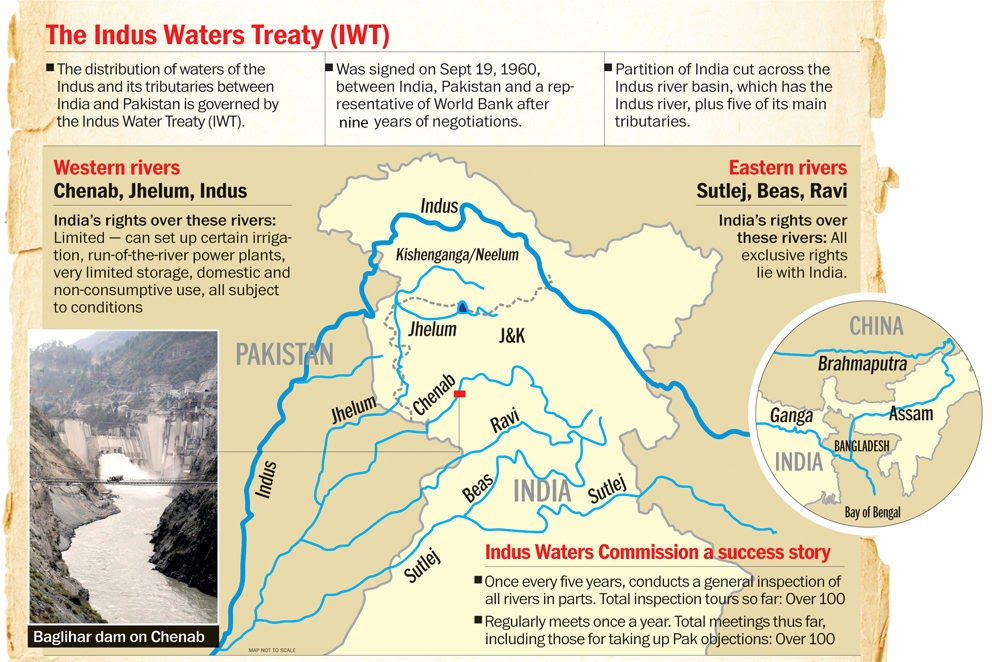Jammu & Kashmir Switch to Hindi
Indus Water Treaty
Why in News?
Recently, India suspended meetings of the Permanent Indus Commission (PIC) amid demands to renegotiate the 64-year-old Indus Water Treaty (IWT) with Pakistan.
Key Points
- Indus-Water Treaty (IWT): Signed in 1960, governs the sharing of six Himalayan rivers. It provides a dispute resolution mechanism, involving the Permanent Indus Commission (PIC), neutral experts, or a court through the World Bank.
- The treaty allocates water from the eastern rivers (Beas, Ravi, Sutlej) to India, while Pakistan has rights over the western rivers (Chenab, Indus, Jhelum). India can use the western rivers for limited irrigation and power generation.
- The Dispute: The ongoing dispute centers on the Kishanganga (330MW) and Ratle hydropower (850MW) projects in Jammu and Kashmir. India and Pakistan have different interpretations of the treaty's dispute resolution process.
- Kishanganga project: Located in Bandipore, Jammu and Kashmir, is a run-of-the-river hydroelectric project with a capacity of 330 MW.
- It diverts water from the Kishanganga River (Neelum River in Pakistan) to a power plant in the Jhelum River basin through a tunnel.
- Pakistan objected, citing concerns over water flow, but in 2013, The Hague’s Permanent Court of Arbitration allowed India to proceed with certain conditions.
- World Bank’s Role: Limited to procedural matters like appointing experts and facilitating meetings. It has paused and resumed processes based on mutual cooperation efforts between India and Pakistan.
- Permanent Indus Commission: Mechanism for cooperation and information exchange between India and Pakistan, with a Commissioner from each country.
- Commissioners of both countries are mandated to meet every year.
- Dispute Resolution: The dispute redressal mechanism provided under Article IX of the IWT is a graded mechanism. It’s a 3-level mechanism.
- Questions: These are simpler technical or operational issues handled by the Permanent Indus Commission (PIC) during regular meetings between the commissioners of both countries.
- Differences: If unresolved at the PIC level, differences are escalated to a Neutral Expert appointed to resolve technical disputes, such as design or operational concerns.
- Disputes: Major conflicts are referred to a Court of Arbitration, an ad hoc tribunal to handle larger disputes concerning the Treaty’s interpretation or implementation.
Permanent Court of Arbitration
- It was established in 1899 and is headquartered in The Hague, Netherlands.
- Purpose: It is an intergovernmental organization dedicated to serve the international community in the field of dispute resolution and to facilitate arbitration and other forms of dispute resolution between States.
- It has a three-part organizational structure consisting of:
- Administrative Council - to oversee its policies and budgets,
- Members of the Court - a panel of independent potential arbitrators, and
- International Bureau - its Secretariat, headed by the Secretary-General.
- Funds: It has a Financial Assistance Fund which aims at helping developing countries meet part of the costs involved in international arbitration or other means of dispute settlement offered by the PCA.
Uttar Pradesh Switch to Hindi
Madrasas’s Education
Why in News?
Recently, the National Commission for Protection of Child Rights (NCPCR) highlighted concerns about madrasa education in India, citing non-compliance with the Right to Education Act, 2009.
Key Points
- NCPCR Concerns: NCPCR informed the Supreme Court that madrasa education is not comprehensive and does not comply with the Right to Education Act (RTE), 2009 provisions.
- Textbooks used in madrasas reportedly promote the “supremacy of Islam,” conflicting with secular educational principles and RTE requirements.
- High Court Ruling:The Allahabad High Court declared the Uttar Pradesh Board of Madarsa Education Act, 2004 "unconstitutional."
- The Act was found to violate "the principle of secularism" and fundamental rights under Article 14 of the Constitution.
- Madrasas: Madrasa is an Arabic word for an educational institution.
- Initially, mosques served as educational institutions in early Islam, but by the 10th century, madrasas evolved into distinct entities for both religious and secular learning in the Islamic world.
- The earliest madrasas were found in Khorasan and Transoxania (modern eastern and northern Iran, central Asia, and Afghanistan), with larger institutions providing housing for students, especially those from poor backgrounds.
- As of 2018-19, India had 24,010 madrasas: 19,132 recognized and 4,878 unrecognized.
- Recognized madrasas are under state boards; unrecognized ones follow curricula from major seminaries like Darul Uloom Nadwatul Ulama and Darul Uloom Deoband.
- Uttar Pradesh has 60% of the country's madrasas.11,621 recognized and 2,907 unrecognized madrasas.
- Categories of Madrasas in India:
- Madrasa Darse Nizami: Operated as public charities and are not required to follow state school education curricula.
- Madrasa Darse Aliya: Affiliated with state madrasa education boards (e.g., Uttar Pradesh Board of Madrasa Education).
- Governed by state governments, with teachers and officials appointed by them.
- Approximately 1.69 lakh students appeared for UP madrasa board exams (equivalent to Class 10 and Class 12) in 2023.
- Funding for Madrasas: Bulk of the funding comes from respective state governments.
- Central Government Scheme:Scheme for Providing Education to Madrasas/Minorities (SPEMM) provides financial assistance to madrasas and minority institutions.
- Sub-schemes under SPEMM:
- Scheme for Providing Quality Education in Madrasas (SPQEM).
- Infrastructure Development of Minority Institutes (IDMI).
- Sub-schemes under SPEMM:
- SPEMM was transferred from the Ministry of Minority Affairs to the Ministry of Education in April 2021.
- Central Government Scheme:Scheme for Providing Education to Madrasas/Minorities (SPEMM) provides financial assistance to madrasas and minority institutions.
National Commission for Protection of Child Rights
- NCPCR is a statutory body set up in March 2007 under the Commissions for Protection of Child Rights (CPCR) Act, 2005.
- It is under the administrative control of the Ministry of Women & Child Development.
- The Commission's mandate is to ensure that all laws, policies, programs, and administrative mechanisms are in consonance with the child rights perspective as enshrined in the Constitution of India and also the UN Convention on the Rights of the Child.
- It inquiries into complaints relating to a child's right to free and compulsory education under the Right to Education Act, 2009.
- It monitors the implementation of the Protection of Children from Sexual Offences (POCSO) Act, 2012.
Haryana Switch to Hindi
Farmer Factor in Haryana
Why in News?
Recently, farmer unrest has become a key issue in Haryana's assembly elections, highlighting the evolving dynamics of the state's agrarian economy.
Key Points
- Agriculture and Employment: Haryana ranks 8th in terms of the share of agriculture in the state's Gross State Value Addition (GSVA), nearly 18% according to GSVA data for 2022-23.
- However, in terms of agriculture's share in the total workforce, nearly 32% according to Periodic Labour Force Survey (PLFS) 2022-23, Haryana is ranked 15th.
- Despite having a relatively low share of agriculture in both overall output and employment, Haryana ranks 2nd in India, following Punjab, for Gross State Value Addition (GSVA) in agriculture per agricultural worker.
- This indicates that agriculture in Haryana is a significantly high-value activity compared to most other states in India.
- Situation Assessment Survey of Agricultural Households for Haryana:The Situation Assessment Survey was conducted by the National Sample Survey Office (NSSO) under the Ministry of Statistics and Programme Implementation.The data is primarily from the 2018-19 survey, with some updates available from 2021-22.
- Approximately 14.7% of the total households in Haryana are agricultural households.
- The average monthly income of agricultural households in Haryana is around Rs.23,000.
- Approximately 48% of the total income of agricultural households comes from agricultural activities.
- Haryana has high productivity levels for key crops such as wheat and rice, with yields often exceeding national averages.
- A significant portion of the agricultural workforce is engaged in seasonal labor and casual employment.
Periodic Labour Force Survey
- About:
- It is a survey conducted by the NSO under the Ministry of Statistics and Programme Implementation (MoSPI) to measure the employment and unemployment situation in India.
- The NSO launched the PLFS in April 2017.
- Objective of PLFS:
- To estimate the key employment and unemployment indicators (viz. Worker Population Ratio, Labour Force Participation Rate, Unemployment Rate) in the short time interval of three months for the urban areas only in the ‘Current Weekly Status’ (CWS).
- To estimate employment and unemployment indicators in both ‘Usual Status’ and CWS in both rural and urban areas annually.
Rajasthan Switch to Hindi
Rain Alert in Rajasthan
Why in News?
Recently, the India Meteorological Department has issued a yellow alert for rainfall in several districts of eastern Rajasthan, including Jaipur, Ajmer, Alwar, and Udaipur.
Key Points
- Color Coded Alerts:
- Green Alert: Signifies "No warning," with light to moderate rainfall forecasted, ranging from 15.6 mm to 64.4 mm.
- Yellow Alert: Signifies "Watch," with heavy rainfall expected, ranging from 64.5 mm to 115.5 mm.
- Orange Alert: Stands for "Alert," indicating very heavy rainfall, ranging from 115.6 mm to 204.4 mm.
- Red Alert: Signifies "Warning," with extremely heavy rainfall forecasted, exceeding 204.5 mm.
- Upgrade in Forecasting: India's weather department is set for a significant upgrade to improve localized and extreme-weather predictions with greater accuracy.
- New Mission: A new weather forecasting mission with a budget of at least Rs 10,000 crore is expected to launch soon, significantly larger than the Monsoon Mission, 2012.
- It will emphasize developing accurate computer simulation models for India and addressing climate change scenarios.
- The mission will enhance the use of sophisticated instruments like Doppler radars and integrate Artificial Intelligence (AI)/Machine Learning (ML) in weather forecasting.
- India has three meteorological satellites (INSAT-3D, INSAT-3DR and INSAT-3DS), with the next-generation INSAT-4 series under development to provide high-resolution data for improved forecasts.
India Meteorological Department (IMD)
- IMD was established in 1875. It is the National Meteorological Service of the country and the principal government agency in all matters relating to meteorology and allied subjects.
- It works as an agency of the Ministry of Earth Sciences of the Government of India.
- It is headquartered in New Delhi.
- IMD is also one of the six Regional Specialized Meteorological Centres of the World Meteorological Organization.
- Roles and Responsibilities:
- To take meteorological observations and to provide current and forecast meteorological information for optimum operation of weather-sensitive activities like agriculture, irrigation, shipping, aviation, offshore oil explorations, etc.
- To warn against severe weather phenomena like tropical cyclones, norwesters, dust storms, heavy rains and snow, cold and heat waves, etc., which cause destruction of life and property.
- To provide meteorological statistics required for agriculture, water resource management, industries, oil exploration and other nation-building activities.
- To conduct and promote research in meteorology and allied disciplines.


.png)



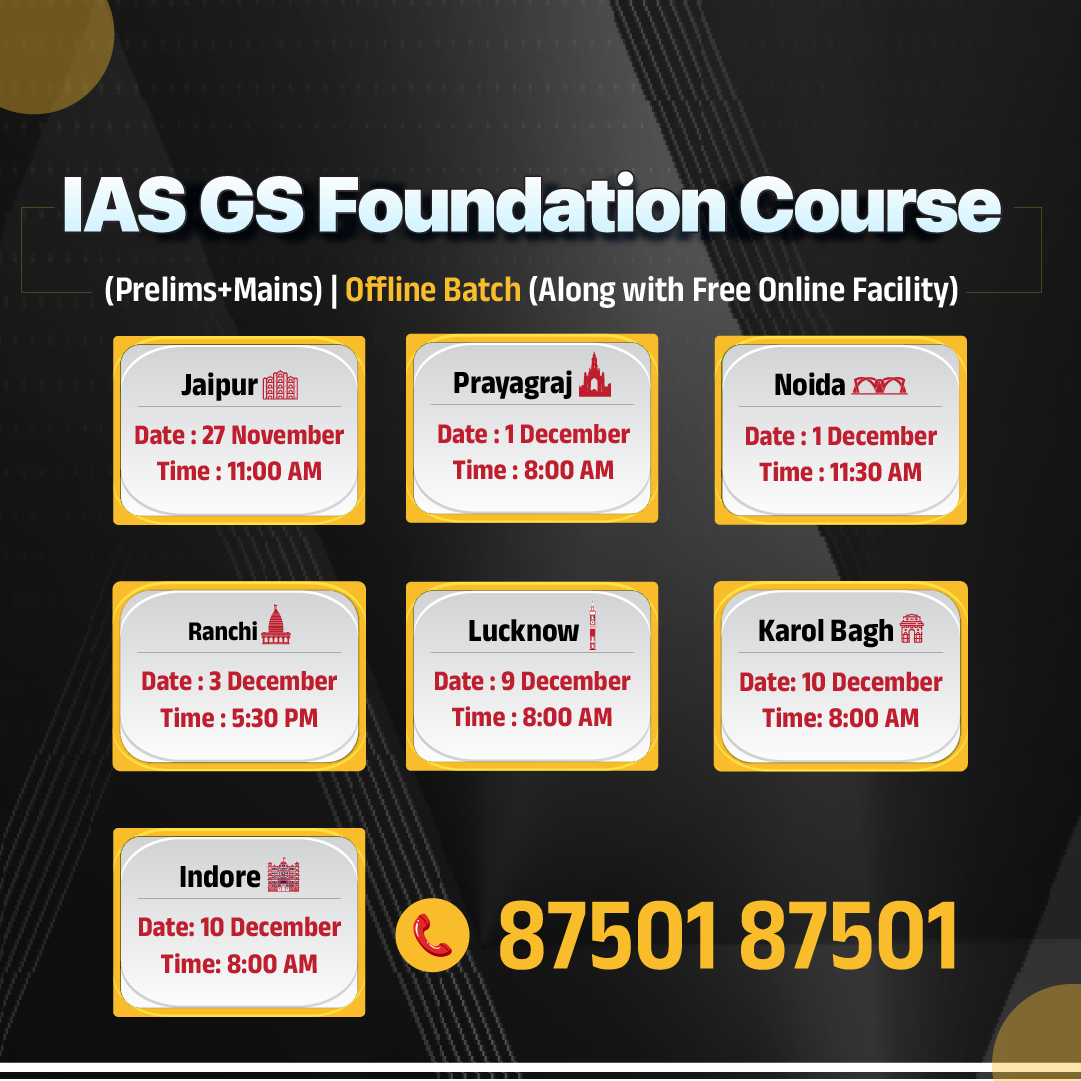

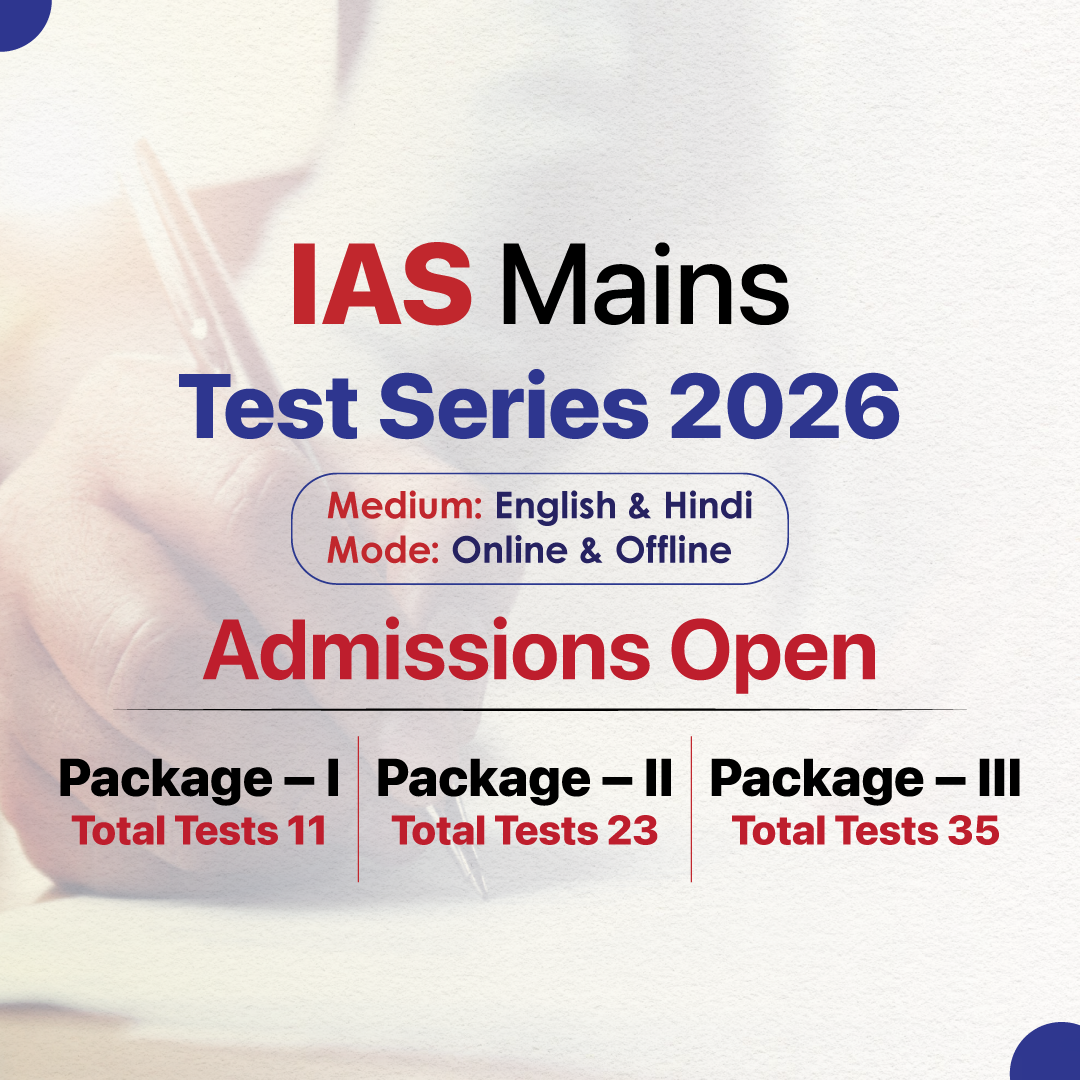

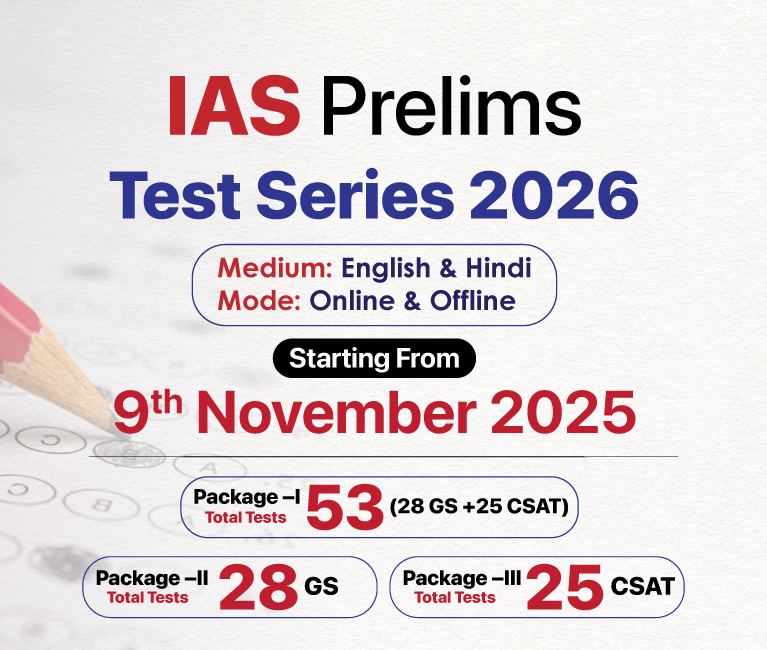


.png)
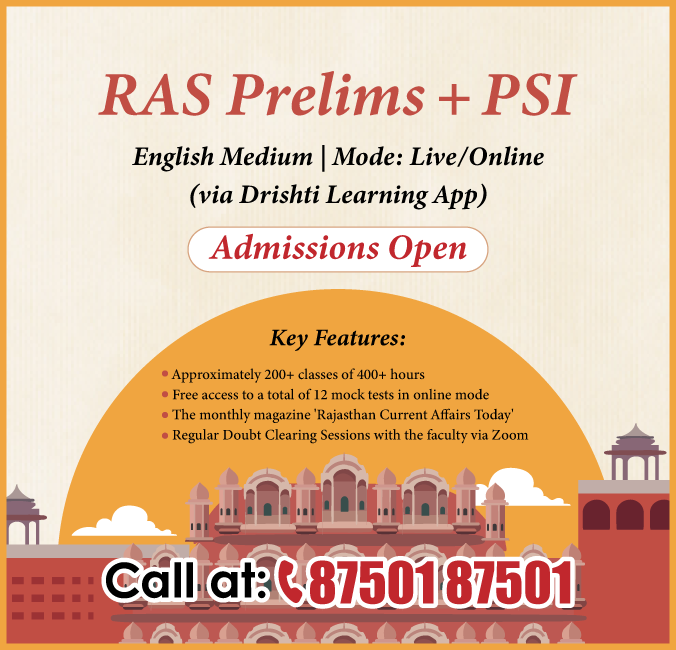

.jpg)



 PCS Parikshan
PCS Parikshan